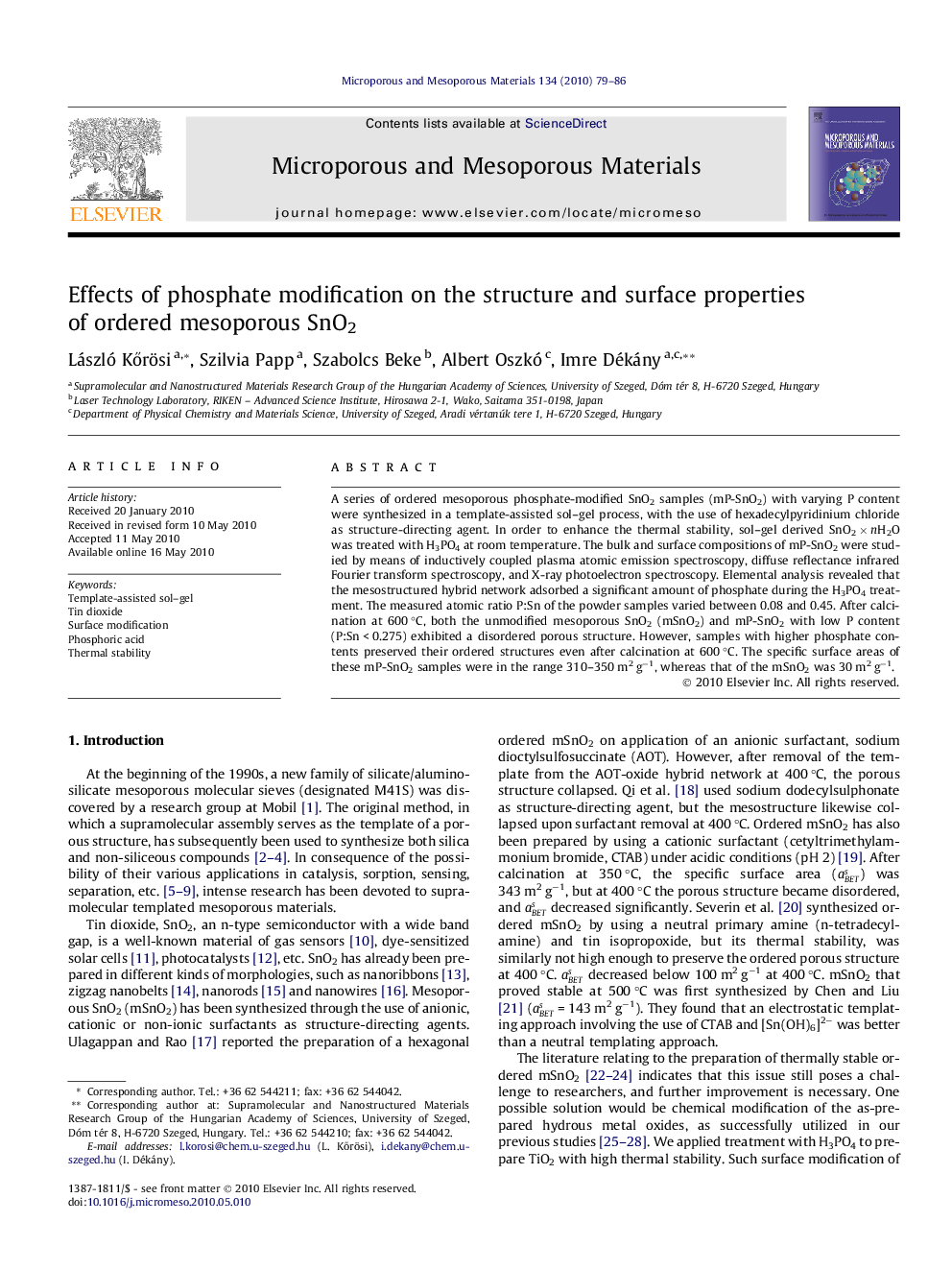| Article ID | Journal | Published Year | Pages | File Type |
|---|---|---|---|---|
| 75391 | Microporous and Mesoporous Materials | 2010 | 8 Pages |
A series of ordered mesoporous phosphate-modified SnO2 samples (mP-SnO2) with varying P content were synthesized in a template-assisted sol–gel process, with the use of hexadecylpyridinium chloride as structure-directing agent. In order to enhance the thermal stability, sol–gel derived SnO2 × nH2O was treated with H3PO4 at room temperature. The bulk and surface compositions of mP-SnO2 were studied by means of inductively coupled plasma atomic emission spectroscopy, diffuse reflectance infrared Fourier transform spectroscopy, and X-ray photoelectron spectroscopy. Elemental analysis revealed that the mesostructured hybrid network adsorbed a significant amount of phosphate during the H3PO4 treatment. The measured atomic ratio P:Sn of the powder samples varied between 0.08 and 0.45. After calcination at 600 °C, both the unmodified mesoporous SnO2 (mSnO2) and mP-SnO2 with low P content (P:Sn < 0.275) exhibited a disordered porous structure. However, samples with higher phosphate contents preserved their ordered structures even after calcination at 600 °C. The specific surface areas of these mP-SnO2 samples were in the range 310–350 m2 g−1, whereas that of the mSnO2 was 30 m2 g−1.
